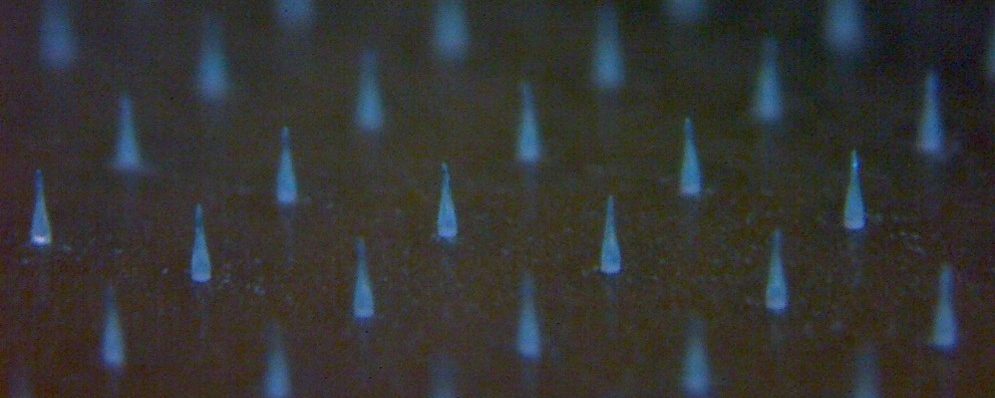Research Vision
The mission statement of the Hosein Research Group is to provide materials-based solutions that address global issues on energy, sustainability, and the environment.
You can download a PDF copy of our research overview here.
Our research involves the synthesis of organic (polymers, polymer blends) and inorganic materials (ceramics, metal oxides, metal sulfides) with advanced composition and structure in order to explore processing-structure-property-performance relationships relevant for materials for energy conversion, energy storage, conductive materials, cellular structures, and functional surfaces. Our research work entails careful control over composition and morphology during materials processing, in situ monitoring of structure formation, materials characterization, property testing, and applications.
Project 1: Multivalent Ion Batteries: Next-Generation Electro-chemical Energy Storage
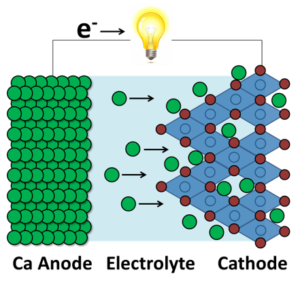 Our lab is investigating the fabrication and performance of batteries that employ earth-abundant metals, such as sodium, calcium, and aluminum, as the ion carrier. The aim is to develop new batteries that usher in a post-lithium battery era, making batteries safer, more economical, and possessing greater capacity. Our work also focuses on developing new anode and cathode materials that facilitate fast energy storage and discharge, as well as greater energy densities.
Our lab is investigating the fabrication and performance of batteries that employ earth-abundant metals, such as sodium, calcium, and aluminum, as the ion carrier. The aim is to develop new batteries that usher in a post-lithium battery era, making batteries safer, more economical, and possessing greater capacity. Our work also focuses on developing new anode and cathode materials that facilitate fast energy storage and discharge, as well as greater energy densities.
Project 2: Polymer Electrolytes for All Solid State Batteries
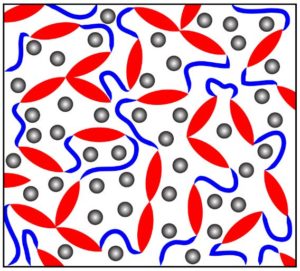 We are exploring a wide range of polymer chemistries as materials that operate as the solid electrolyte in batteries. Such polymer electrolytes solve the issue of liquid electrolytes being highly flammable and volatile, and also allows batteries to achieve a greater capacity. Through control of the polymer composition and architecture we are enabling the SPE to possess high conductivity, yet retain high mechanical strength to handle the mechanical and thermal stresses during battery operation (discharging and charging).
We are exploring a wide range of polymer chemistries as materials that operate as the solid electrolyte in batteries. Such polymer electrolytes solve the issue of liquid electrolytes being highly flammable and volatile, and also allows batteries to achieve a greater capacity. Through control of the polymer composition and architecture we are enabling the SPE to possess high conductivity, yet retain high mechanical strength to handle the mechanical and thermal stresses during battery operation (discharging and charging).
Project 3: Smart Polymer Coatings for Solar Energy Capture
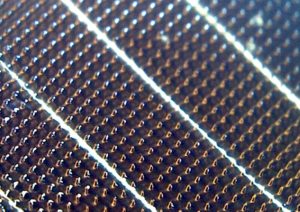
Conventional solar cells become dramatically less efficient when the sun is not shining directly on the surface: quoted efficiencies of 15-19% are only achieved for sunlight within a narrow range of acceptance angles. Consequently, sub-optimal operating efficiencies occur during the morning and evening hours, as well as winter days (i.e., northern regions), when sunlight is outside of this acceptable range. Current work involves developing new solar cell coating architectures to managed light propagation in solar cells, by which increased solar energy capture may be achieved.
Project 4: Advanced Surface Textures for Anti-Wetting Applications
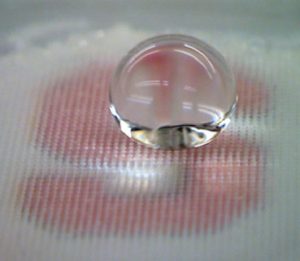 Our lab is employing an optical writing technique to generate large-scale, micro-pillar patterned surfaces. The process is highly scalable, tunable in terms of composition and pillar shape, as well easily configurable in terms of the pillar spacing and symmetry. Through control over the composition and architecture, we seek to enable the surfaces to perform functions as anti-wetting, anti-fouling, anodes for lithium ion batteries, as well as surfaces for chemical detection.
Our lab is employing an optical writing technique to generate large-scale, micro-pillar patterned surfaces. The process is highly scalable, tunable in terms of composition and pillar shape, as well easily configurable in terms of the pillar spacing and symmetry. Through control over the composition and architecture, we seek to enable the surfaces to perform functions as anti-wetting, anti-fouling, anodes for lithium ion batteries, as well as surfaces for chemical detection.
Project 5: Polymer Blend Structures for Energy Conversion and Storage
 Our group has established a novel processing route to control the morphology of multi-component polymer systems. We invoke light pattern formation processes during the photo-curing of photoreactive blends, whereby the blend morphology inherits the same pattern as the light profile. This results in novel binary phase structures, which may be directed and tuned with light. We are currently exploiting this process to control the morphology in blends that may be used for advanced electrolytes in lithium ion batteries, thermo-electric conversion, and solid-state lighting.
Our group has established a novel processing route to control the morphology of multi-component polymer systems. We invoke light pattern formation processes during the photo-curing of photoreactive blends, whereby the blend morphology inherits the same pattern as the light profile. This results in novel binary phase structures, which may be directed and tuned with light. We are currently exploiting this process to control the morphology in blends that may be used for advanced electrolytes in lithium ion batteries, thermo-electric conversion, and solid-state lighting.
